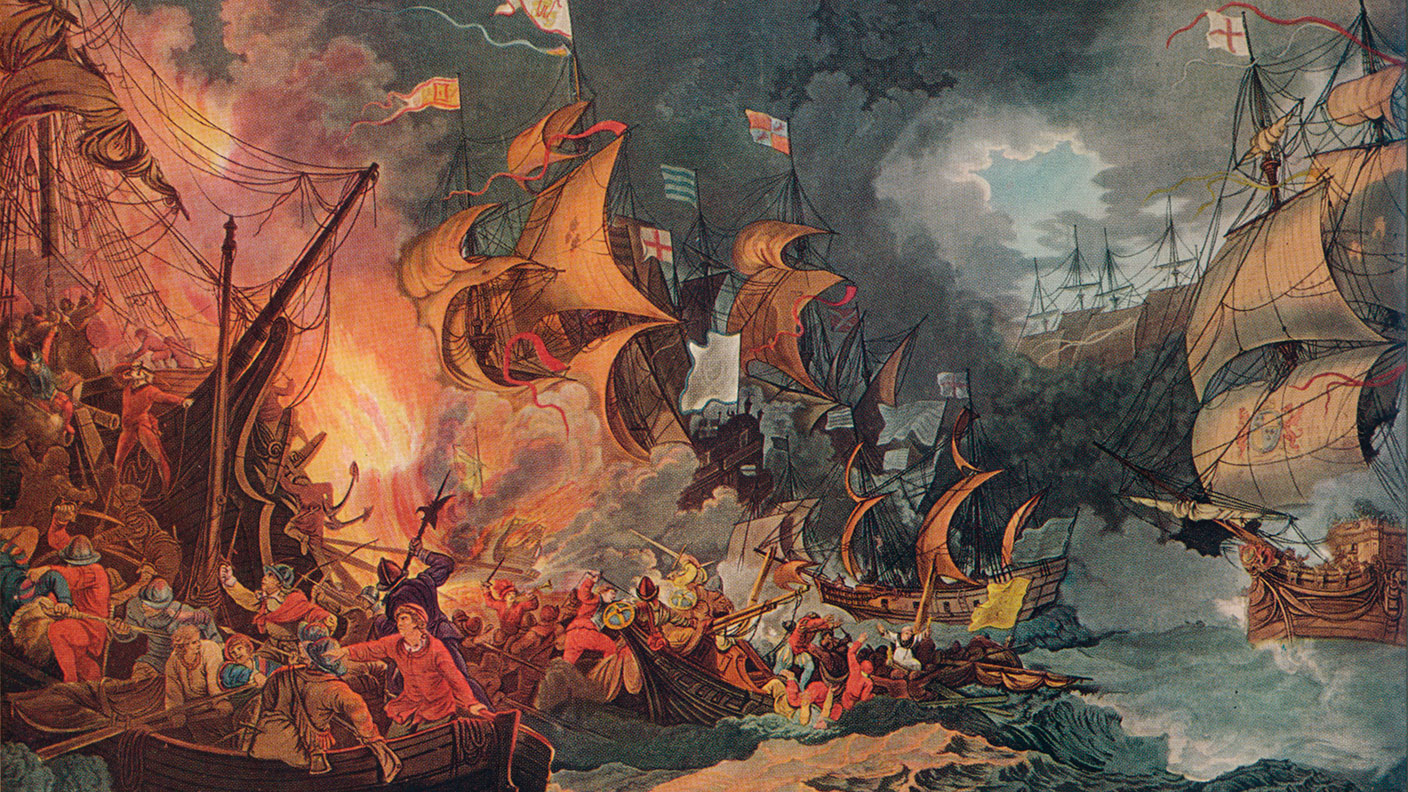
When Queen Mary I died, and with her England's brief and bloody restoration of Catholicism, she was replaced with Elizabeth I, who reimposed Protestantism.
But Philip II of Spain, Mary's widower, didn't take too kindly to this outrageous heresy. So he built a vast fleet of ships, and assembled an army of 30,000 men in the Netherlands. The two would join up and after a swift and efficient invasion, England would be restored to the Catholic fold.
Pope Sixtus V, having assigned the plan the status of a Holy Crusade, blessed the Grande y Felicsima Armada. And on 28 April 1588, with 130 ships under the command of the Duke of Medina Sidonia carrying 8,000 sailors and 18,000 soldiers, the Spanish Armada set sail from Lisbon.
MoneyWeek
Subscribe to MoneyWeek today and get your first six magazine issues absolutely FREE

Sign up to Money Morning
Don't miss the latest investment and personal finances news, market analysis, plus money-saving tips with our free twice-daily newsletter
Don't miss the latest investment and personal finances news, market analysis, plus money-saving tips with our free twice-daily newsletter
After a few delays for bad weather, they were sighted off Cornwall on 19 July, and soon after off Plymouth, where Sir Francis Drake was almost certainly not playing bowls.
The English fleet outnumbered them with smaller, nimbler ships, but the Armada had considerably more firepower. And the strict crescent formation they kept made inflicting damage on them very difficult. So the two fleets danced around each other, skirmishing up the English Channel until the Spanish anchored at Gravelines, now home to a French nuclear power station, but then part of the Spanish Netherlands.
On 28 July, the battle began in earnest. The English sent fireships – old ships loaded with pretty much anything that would burn – among the Spanish. The Armada broke formation, and was now vulnerable. And on 29 July, the English attacked in the Battle of Gravelines.
English ships and an unfavourable wind made escape back down the English Channel impossible, so the Armada fled northwards and attempted to return round the tip of Scotland and back down the west coast of Ireland. But again the weather intervened, with storms dashing many ships on the rocky coasts. Less than half the ships that set out returned safely.
The victory was a huge boon for Elizabeth, England and the Protestant faith, and dealt a massive blow to Spain's dreams of world domination.
Get the latest financial news, insights and expert analysis from our award-winning MoneyWeek team, to help you understand what really matters when it comes to your finances.
Ben studied modern languages at London University's Queen Mary College. After dabbling unhappily in local government finance for a while, he went to work for The Scotsman newspaper in Edinburgh. The launch of the paper's website, scotsman.com, in the early years of the dotcom craze, saw Ben move online to manage the Business and Motors channels before becoming deputy editor with responsibility for all aspects of online production for The Scotsman, Scotland on Sunday and the Edinburgh Evening News websites, along with the papers' Edinburgh Festivals website.
Ben joined MoneyWeek as website editor in 2008, just as the Great Financial Crisis was brewing. He has written extensively for the website and magazine, with a particular emphasis on alternative finance and fintech, including blockchain and bitcoin.
As an early adopter of bitcoin, Ben bought when the price was under $200, but went on to spend it all on foolish fripperies.
-
 Why you fear money – and how to fix it: MoneyWeek Talks
Why you fear money – and how to fix it: MoneyWeek TalksPodcast MoneyWeek's digital editor, Kalpana Fitzpatrick, speaks to financial psychotherapist Vicky Reynal about how to change your money mindset for the better.
-
 How cancelling unused direct debits could boost your pension by £37,000
How cancelling unused direct debits could boost your pension by £37,000A new year refresh of your spending could save you money and help boost your pension pot.

